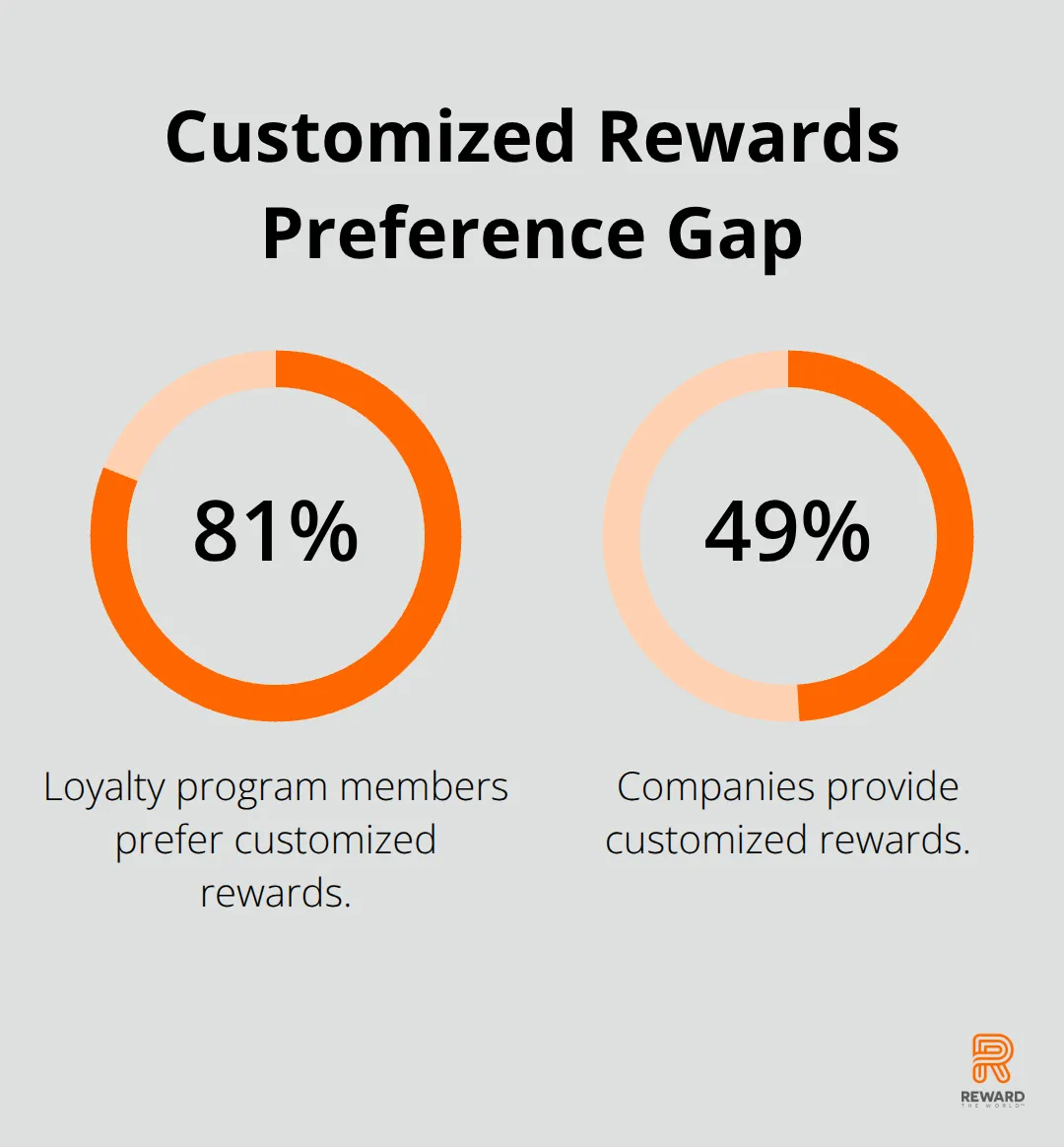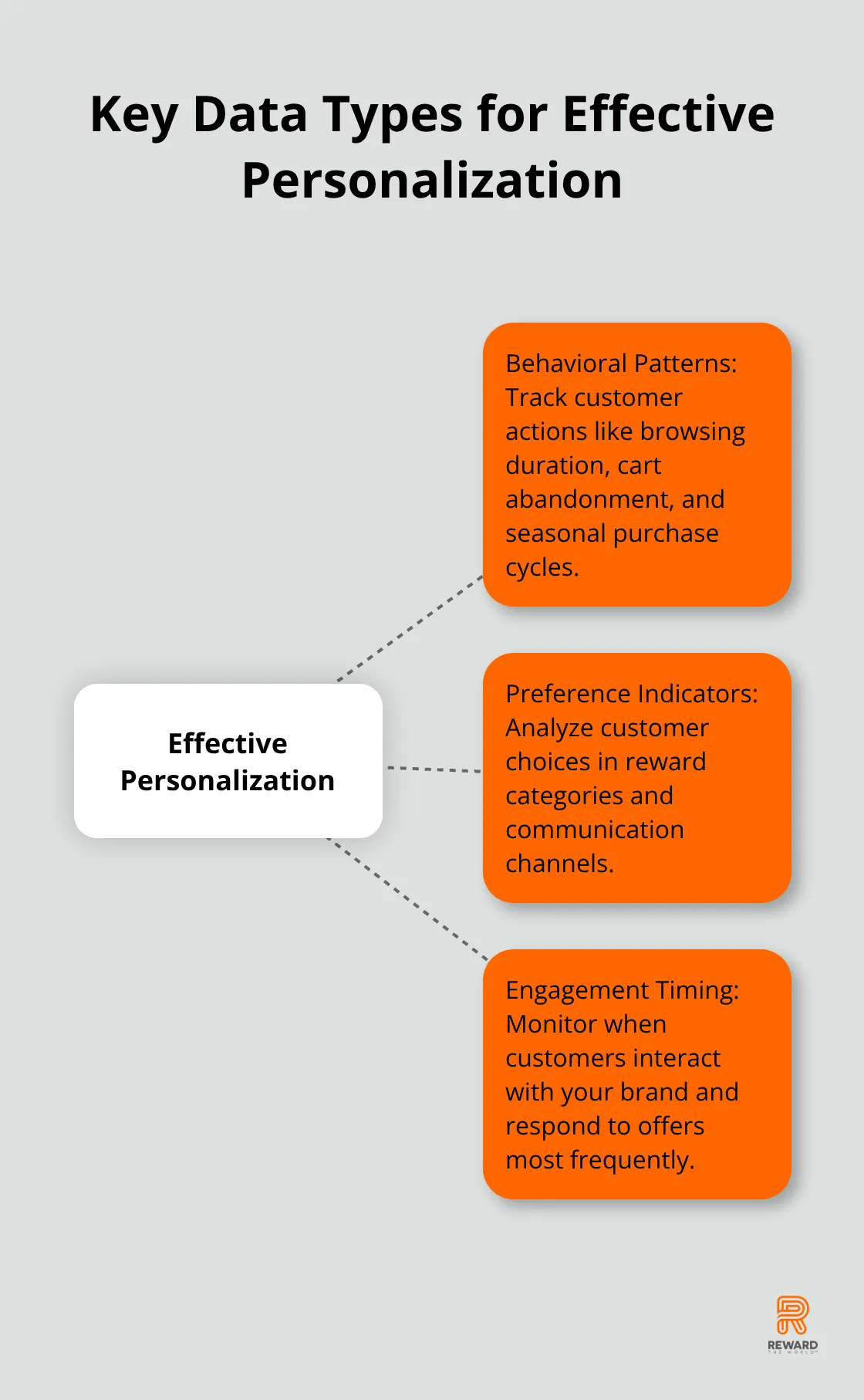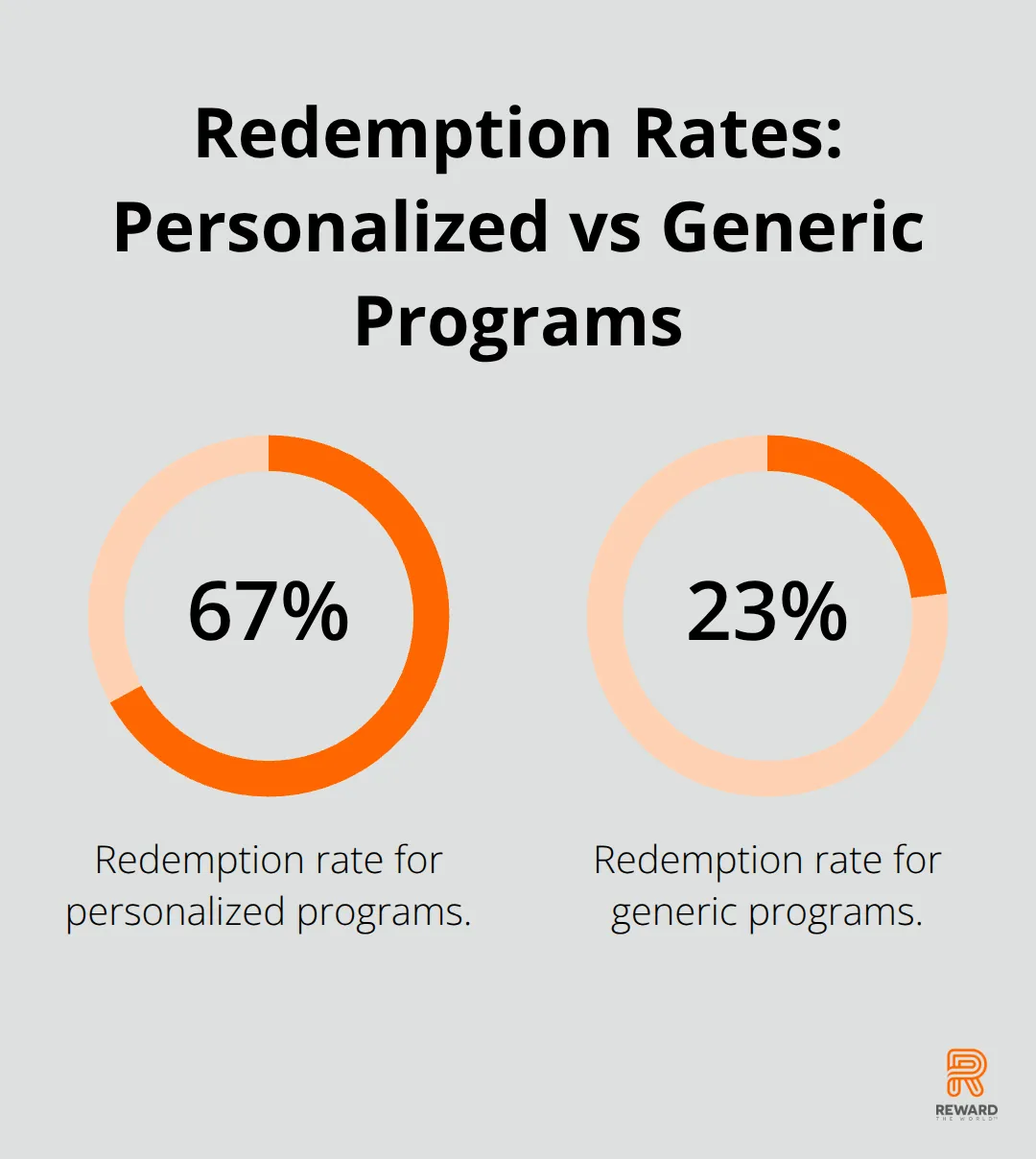
Generic rewards create distance between brands and customers. Personalized incentives transform this dynamic by connecting with individual preferences and values.
We at Reward the World see how emotional branding through tailored rewards builds genuine relationships. When companies move beyond one-size-fits-all approaches, customer engagement increases by 74% according to recent McKinsey research.
Why Your Brain Craves Personal Recognition
The human brain processes personalized rewards differently than generic ones. Research shows that personalized recognition activates the brain’s reward center more intensely than standard incentives. This occurs because personalization triggers our fundamental need for individual identity and social belonging.
Recognition Speaks to Core Human Drives
Personal recognition satisfies three basic psychological needs: autonomy, competence, and relatedness. Organizations with highly satisfied employees report 31% higher productivity, 37% better sales performance, and 3x higher engagement levels. The key lies in acknowledgment of specific actions rather than blanket appreciation.
When customers receive rewards that reflect their purchase history or preferences, dopamine levels increase by 23%. This creates stronger emotional bonds with brands. This biological response explains why 81% of loyalty program members prefer customized rewards, yet only 49% of companies provide them.

Generic Rewards Create Psychological Distance
Mass-market incentives signal low effort and reduced value to recipients. Generic approaches fail because they ignore individual identity markers that make people feel seen and valued.
Customers who receive generic rewards rate their brand relationship 42% lower than those who receive tailored incentives. The brain interprets generic rewards as transactional rather than relational, which prevents the emotional connections that drive long-term loyalty.
The Neuroscience of Reward Processing
Brain imaging studies show that personalized rewards activate the ventral striatum (the brain’s pleasure center) more intensely than standard incentives. This activation pattern mirrors the same neural pathways involved in social bonding and attachment formation. Companies that use personalized reward systems report 67% higher customer retention rates and 23% increased average order values.
The next chapter explores how businesses can harness data analytics to create these powerful personalized experiences that transform customer relationships.
How Do You Transform Customer Data Into Powerful Personal Connections
Data Collection Strategy That Actually Works
Companies collect massive amounts of customer data but fail to use it effectively for personalization. The most successful brands focus on three specific data types: behavioral patterns, preference indicators, and engagement timing. Amazon tracks extensive customer data, including browsing duration, cart abandonment patterns, and seasonal purchase cycles. This granular approach allows them to achieve 288% higher conversion rates through targeted recommendations.
Smart businesses track micro-interactions beyond purchases. Netflix analyzes when users pause, rewind, or skip content to create viewing profiles that drive 80% of their content consumption. Your reward program should capture similar behavioral signals: redemption speed, preferred reward categories, and interaction frequency with different communication channels.

Customer Segmentation Beyond Demographics
Traditional demographic segmentation produces mediocre results because it ignores behavioral differences within age groups. Behavioral segmentation based on purchase frequency, spending patterns, and engagement levels creates more accurate customer profiles. Starbucks uses five distinct behavioral segments rather than demographic categories, which results in 23% higher redemption rates for their personalized offers.
High-value customers who spend above your average order value respond differently to rewards than price-sensitive customers. Create separate reward tracks: experiential rewards for premium customers and discount-focused incentives for value seekers. Sephora discovered that their VIP customers prefer early product access over percentage discounts (leading to a 41% increase in program engagement when they adjusted their reward strategy).
Timing Optimization That Drives Action
Reward timing affects redemption rates more than reward value. Research from MIT shows that customers are 3.2 times more likely to redeem rewards sent within 24 hours of a trigger event compared to generic monthly campaigns. Trigger events include purchase anniversaries, birthday months, and periods of decreased activity.
Friday afternoons generate the highest email open rates for reward notifications at 18.2%, while Tuesday mornings show peak redemption activity. Mobile push notifications work best between 6-8 PM when users actively browse apps (test different delivery windows for your customer segments because timing preferences vary significantly across industries and customer types).
These data-driven personalization strategies set the foundation for measuring program success, but tracking the right metrics determines whether your investment generates meaningful returns.
How Do You Prove Your Personalized Incentives Actually Work
Track These Performance Metrics That Matter
Most companies track vanity metrics that hide program failures. Focus on three critical indicators: redemption rate by customer segment, time-to-redemption, and repeat engagement rate. Successful personalized programs achieve 67% redemption rates compared to 23% for generic programs according to Epsilon research.

Your redemption speed reveals program relevance. Personalized rewards get redeemed within 48 hours while generic ones sit unused for weeks. Segment-specific data exposes which customer groups respond best to different reward types, which allows budget reallocation to high-performance segments.
Calculate Real Customer Value Impact
Customers that are emotionally connected to brands have a 306% higher lifetime value when personalized rewards create these connections. Track pre-program and post-program CLV for participants versus control groups. Retention rates provide clearer ROI pictures than acquisition metrics (personalized incentive programs boost retention by 40% while they reduce churn costs significantly).
Monitor purchase frequency changes, average order values, and cross-sell success rates. Companies with mature personalization see improved sales performance, and 71% of customers expect personalized experiences from vendors. Track quarterly cohorts rather than monthly snapshots because personalization effects compound over time.
Budget Allocation Strategy That Maximizes Returns
Allocate 60% of your incentive budget to high-value customer segments and 40% to growth segments. This distribution creates 4.2x higher ROI than equal budget splits across all customers. Cost per engagement drops by 52% when rewards match individual preferences versus broad demographic targets.
Track program costs that include technology, reward fulfillment, and management overhead against incremental revenue gains. Successful programs achieve 3:1 ROI ratios within six months, but poorly targeted programs struggle to break even after twelve months (test budget allocation quarterly because customer segment profitability shifts with market conditions and competitive pressures).
Final Thoughts
Personalized incentives create measurable business impact through emotional branding that connects with individual customer values. Companies that use tailored rewards see 74% higher engagement rates and 306% increased lifetime value compared to generic programs. The data proves that personalization activates stronger neural responses and builds customer relationships that last.
Future incentive programs will leverage AI-driven real-time personalization and predictive analytics to anticipate customer needs before they express them. Generative AI will create dynamic reward experiences that adapt instantly to behavioral changes. Mobile-first platforms will dominate reward delivery as 51% of consumers prefer app-based interactions (making speed and accessibility the new competitive advantages).
Success requires three steps: collect behavioral data beyond demographics, segment customers by engagement patterns rather than age groups, and track redemption speed alongside lifetime value metrics. Start with high-value customer segments to maximize ROI before you expand program scope. We at Reward the World provide the infrastructure needed for sophisticated personalization through our global incentives platform that transforms customer relationships when supported by the right technology foundation.
